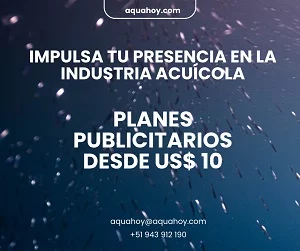
In recirculating aquaculture systems (RAS), maintaining optimal levels of dissolved oxygen (DO) is crucial for healthy fish growth and survival.
In this regard, intensive aquaculture systems often require artificial aeration to maintain optimal levels for healthy growth and productivity. However, traditional aeration methods often entail high energy consumption and maintenance costs.
A group of researchers from IIT Kharagpur and Chonnam National University presented the development and evaluation of a more sustainable and cost-effective aerator, called the “perforated pooled circular stepped cascade aerator (PPCSC),” for intensive aquaculture.
Aeration Systems in Aquaculture
Intensive aquaculture systems often require additional oxygen to meet the demands of fish, especially during peak periods. One response to this challenge is to implement aeration systems.
Artificial aeration is a process used to treat water and increase the level of dissolved oxygen in the water. Aeration creates turbulence, breaks water into droplets to increase the water-air interfacial area, thereby increasing the DO content of the water. Aeration systems operate under three basic principles:
- Aeration due to water discharge into the atmosphere, such as paddle wheel aerator, spiral aerator, vertical pump, spray pump, etc.;
- Air injection into water causing aeration, such as a propeller aspirator, diffused aeration system, etc.; and
- Water falling from a height causing cascade aeration, weir, plate, etc.
However, traditional aeration systems, such as paddle wheel systems and diffused air systems, often consume a lot of energy and require frequent maintenance, increasing operating costs.
The PPCSC Aerator
The researchers developed the PPCSC aerator. This innovative design utilizes cascading water and strategically located perforations to maximize oxygen transfer, all while consuming significantly less energy.
The PPCSC aerator features an innovative design that uses a single pump to cascade water over perforated steps, creating turbulence and maximizing air-water contact.
Key Results
The researchers tested the PPCSC in a controlled environment, varying the bottom radius (Rb) and water discharge (Q), and obtained the following results:
- The best performance, with a standard aeration efficiency (SAE) of 4.564 kg O2/kWh, was achieved with an Rb of 0.75 meters and a Q of 0.016 cubic meters per second.
- A mathematical model was developed to predict oxygen transfer based on Rb and Q values, aiding in performance optimization.
- Both Rb and Q had a significant impact on oxygen transfer efficiency, highlighting the design’s flexibility.
The PPCSC Aerator: A Sustainable Solution
The “perforated pooled circular stepped cascade aerator (PPCSC)” offers the following advantages for fish farmers:
- Low energy consumption: This innovative aerator uses a pump to cascade water through perforated steps, maximizing air-water contact and oxygen transfer with minimal energy input.
- Cost-effective design: Simple construction and low maintenance requirements make the PPCSC a financially viable option for aquaculture farms.
- Improved efficiency: Studies have shown that the PPCSC achieves higher aeration efficiency compared to traditional methods, leading to better oxygen transfer and fish health.
- Potential for small-scale aquaculture: Well-suited for tank-based systems due to its compact size and efficiency.
Areas for Improvement
The researchers recommend further investigation into:
- Impact of bottom radii: More research is needed to understand how different bottom radius sizes affect aeration efficiency.
- Discharge optimization: Research into the impact of different discharge rates on PPCSC performance has the potential for further optimization.
Conclusion
Overall, the PPCSC aerator has the potential to revolutionize aquaculture in intensive systems by providing an efficient and cost-effective solution for oxygenation. By reducing energy consumption and maintenance, this technology can support environmental and economic goals, ensuring healthier fish and a brighter future for the aquaculture industry.
Additionally, it is important to note that another group of scientists highlighted the importance of Venturi for low-cost aeration of aquaculture systems, as well as the use of nanobubbles.
Contact
Subha M. Roy
Agricultural and Food Engineering Department, IIT Kharagpur, 721 302, West Bengal, India.
Email: subhamanash@gmail.com
Reference (open access)
Roy, S. M., Machavaram, R., Pareek, C. M., & Kim, T. (2024). Investigating the performance of a perforated pooled circular stepped cascade aeration system for intensive aquaculture. Heliyon.
Editor at the digital magazine AquaHoy. He holds a degree in Aquaculture Biology from the National University of Santa (UNS) and a Master’s degree in Science and Innovation Management from the Polytechnic University of Valencia, with postgraduate diplomas in Business Innovation and Innovation Management. He possesses extensive experience in the aquaculture and fisheries sector, having led the Fisheries Innovation Unit of the National Program for Innovation in Fisheries and Aquaculture (PNIPA). He has served as a senior consultant in technology watch, an innovation project formulator and advisor, and a lecturer at UNS. He is a member of the Peruvian College of Biologists and was recognized by the World Aquaculture Society (WAS) in 2016 for his contribution to aquaculture.
